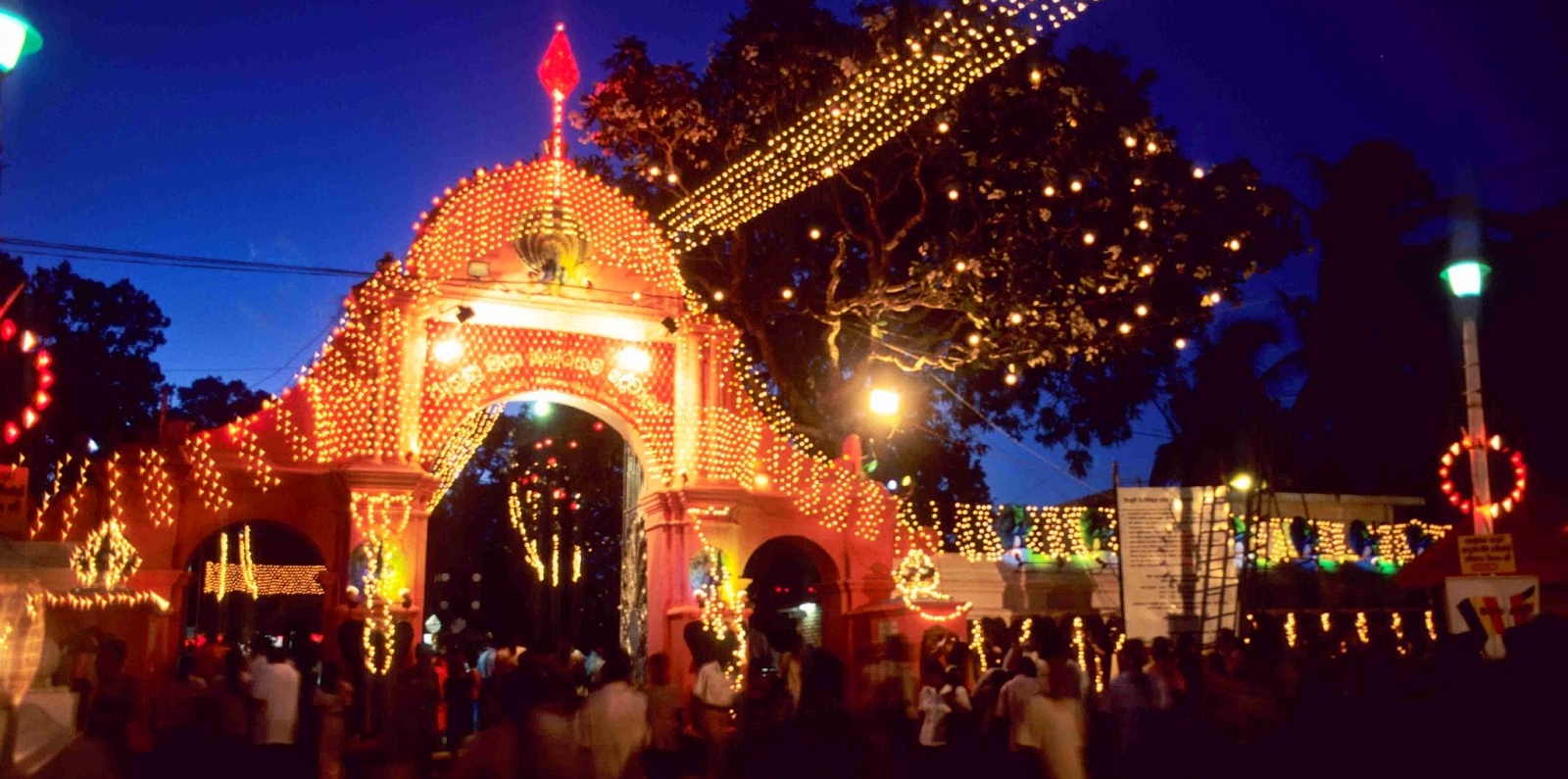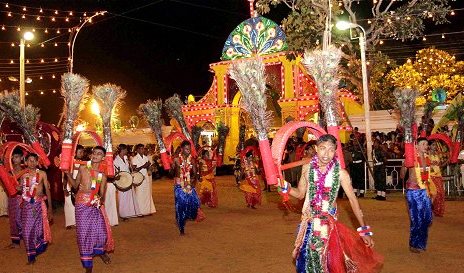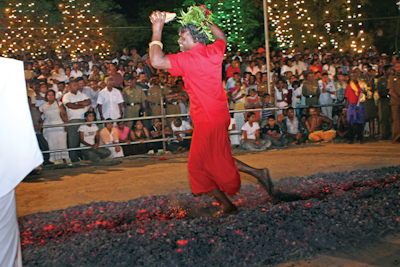Nineteen kilometres inland from Tissa lies Kataragama and is easily visited as a day-trip from Tissa, but staying the night means you can enjoy the evening puja in a leisurely manner and imbibe some of the town’s backwater charm and laid-back rural pace. The town is at its busiest during the Kataragama festival, held around the Esala poya day in late July or early August (at the same time as the great Esala Perahera in Kandy). The festival is famous for the varying forms of physical mortification with which some pilgrims express their devotion to Kataragama, ranging from crawling from the river to the Maha Devale to gruesome acts of self-mutilation: some penitents pierce their cheeks or tongue with skewers; others walk across burning coals – all believe that the god will protect them from pain.
Perhaps no other deity in Sri Lanka embodies the bewilderingly syncretic nature of the island’s Buddhist and Hindu traditions as clearly as the many-faceted Kataragama. The god has two very different origins. To the Buddhist Sinhalese, Kataragama is one of the four great protectors of the island. Although he began life as a rather unimportant local god, named after the town in which his shrine was located, he gained pan-Sinhalese significance during the early struggles against the South Indian Tamils, and is believed to have helped Dutugemunu (see p.348) in his long war against Elara. To the Hindu Tamils, Kataragama is equivalent to the major deity Skanda (also known as Murugan or Subramanian), a son of Shiva and Parvati and brother of Ganesh. Both Buddhists and Hindus have legends which tell how Kataragama came to Sri Lanka to battle against the asuras, or enemies of the gods. Whilst fighting, he became enamored of Valli Amma, the result of the union between a pious hermit and a doe, who became his second wife. His cult waned amongst the Sinhalese following the accession of Tamils to the throne of Kandy, but was subsequently revived amongst the island’s plantation Tamils, who considered Kataragama a manifestation of the god Skanda. Despite Kataragama’s confused lineage, modern-day visitors to the shrine generally pay scant attention to the god’s theological roots, simply regarding him a powerful deity capable of assisting in a wide range of practical enterprises.
Kataragama is often shown carrying a vel, or trident, which is also one of Shiva’s principal symbols. His colour is red (devotees offer crimson garlands when they visit his shrines) and he is frequently identified with the peacock, a bird which was sacrificed to him. Thanks to his exploits, both military and amorous, he is worshipped both as a fearsome warrior and as a lover, inspiring an ecstatic devotion in his followers exemplified by the kavadi, or peacock dance (see p.200) and the ritual self-mutilations practised by pilgrims during the annual Kataragama festival (see above) – a world away from the chaste forms of worship typical of the island’s Buddhist rituals. At the end of the festival, the waters of the Menik Ganga are “cut” with a sword, I symbolizing (according to different interpretations) either the division of the I pure and impure, or the washing of the god’s clothes, or the invocation of rain I for the harvest. During the festival devotees flock to the town from all over Sri I Lanka, some walking along the various pilgrimage routes which converge on I Kataragama from distant parts of the island – the most famous route, the Pada Yatra, leads all the way down the east coast fromjaffha, through the jungles of Yala, and is still tackled by those seeking especial religious merit. Most of the day’s visitors, however, come on the bus.




